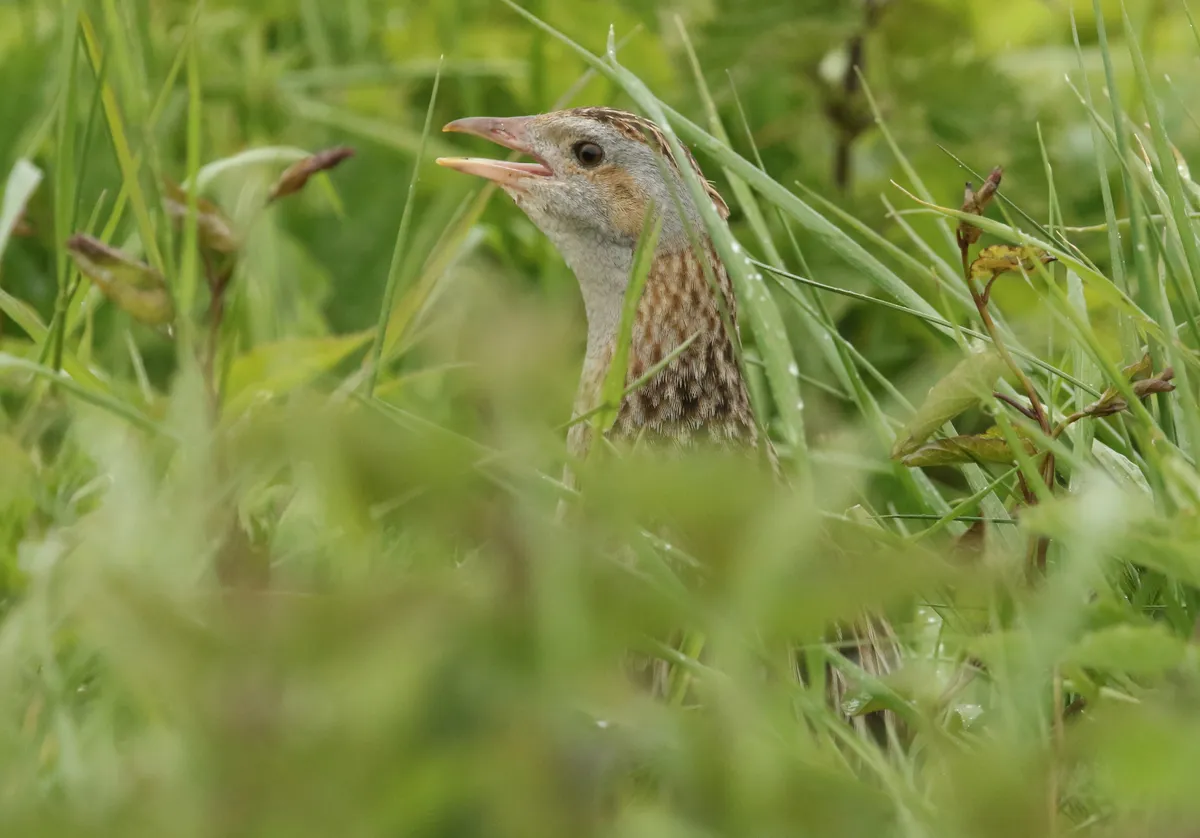The latest RSPB survey results on corncrake numbers makes for worrying reading. Already one of Scotland’s rarest birds, numbers of the species are ‘alarmingly low’, with only 870 calling males recorded this year. This is a drop of 3% from last year.
Although this may not seem a lot, this is just part of a much steeper decline. In 2014 the number stood at 1,282 calling males, meaning that the population has decreased by over 30% in just 5 years.
The unmistakable “crex crex” call of the breeding male was once a familiar summer sound across the UK. Now, due to agricultural practices in the 19th and 20th centuries, corncrake ranges have shrunk dramatically.
They are currently found in just a few places on Scottish Islands and the north-west coast, and their populations have been severely reduced. They are a red-listed species in the UK, meaning they are in need of urgent conservation action.
The greatest threat is mowing practices. Corncrakes live in tall vegetation and mowing of agricultural land can kill up to 60% of chicks, who are pre-fledged and cannot fly to escape.

Agri-environmental schemes have helped to an extent. When introduced in the 90s these schemes, in which farmers and crofters are paid to maintain corncrake habitat and adapt their mowing practices by delaying mowing and mowing from the inside of the field outwards, facilitated an increase in numbers.
They have however remained very vulnerable. As the new survey makes clear, continuation of such schemes are vital to prevent further decline.
“This year’s results highlight the essential support agricultural communities on Scottish islands provide to this rare and secretive bird by managing their land in a corncrake friendly way,” explains Chris Bailey, advisory manager at RSPB Scotland.
“They are the stronghold for this species and the support they receive must continue over the long-term if we’re to have a real chance at ensuring corncrakes continue to breed in Scotland every summer.”
As well as corncrakes these schemes benefit a myriad other species. A new RSPB project called Saving Corncrakes through Advocacy, Land management and Education (SCALE) hopes to focus on three key areas - advocating for continuing government agri-environmental schemes, supporting crofters and farmers with funding, advice and practical support, and raising local and national awareness of the plight of the corncrake.
If successful in achieving the grant, this project may be pivotal in securing the long-term future of this elusive and charismatic bird.
Main image. Close up of a corncrake. © Gerhard Hofmann/EyeEm/Getty
